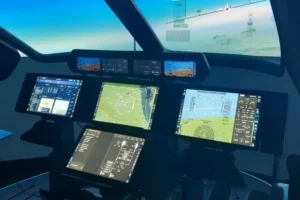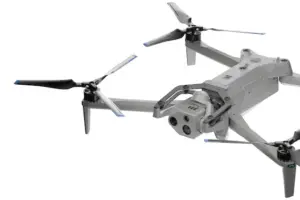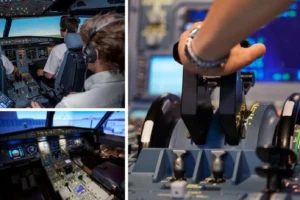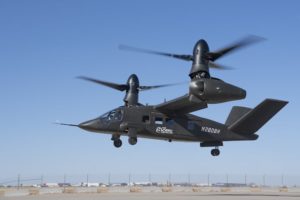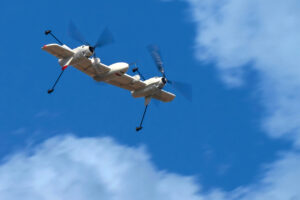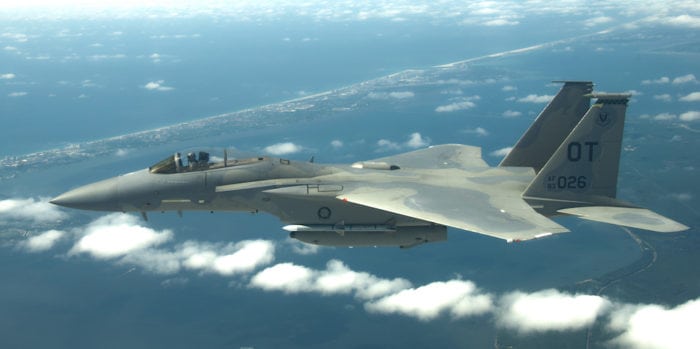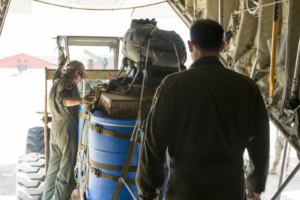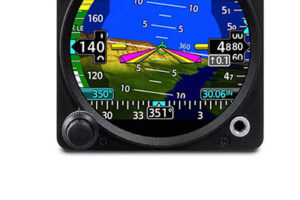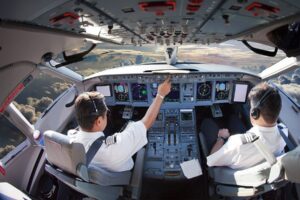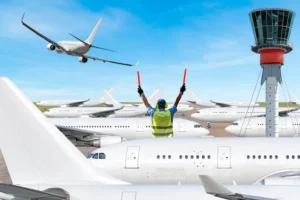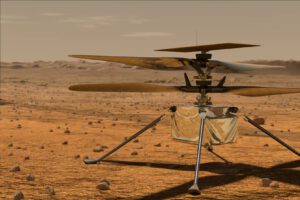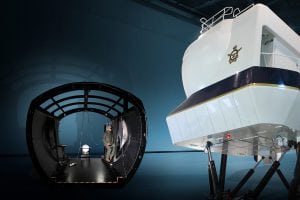Product Focus: Moving Maps New Connections
By Matthew Matarozza | February 1, 2005
Send Feedback
These tools are moving rapidly toward the networked environment, as developers explore integration with traffic alert collision avoidance systems and military data links.
The concept behind a moving map is simple. It’s a representation of a geographic area in which an aircraft’s position is depicted. As the aircraft’s position changes, so does the map area, adjusting itself to keep up with the aircraft’s progress along its flight path.
But it’s within simple concepts that brilliance shines through. Today’s moving maps are a prime example of this. This originally simple device has become a necessity in the cockpit, providing pilots with an unprecedented level of situational awareness.
Nowhere is this more apparent than in the cockpits of military aircraft, in which pilots often need a level of awareness that exceeds that needed by a commercial pilot. In addition to allowing the pilot to see his aircraft’s position on a map section, today’s moving maps can show pilots other aircraft in the area–friends and foes–topographical features and weather conditions. All of this information gives the pilot and crew a more thorough understanding of the military operation and their position in it. As the technology continues to improve, the military branches scramble to add these new features and capabilities.
Push to Integrate
Honeywell has designed the digital maps on several prominent U.S. military platforms. Its digital video map system (DVMS) is on the Navy’s F/A-18C/D Hornet, while its digital map system (DMS) is installed on the Air Force’s F-15 Eagle. The Army’s OH-58 Kiowa Warrior also is equipped with Honeywell digital map technology. On the helicopter, joint variable message format (JVMF) messages are linked to the digital map so that the pilots can view target and threat information. Honeywell also took part in earlier programs like the USAF’s Quiet Night for the C-130, in which traffic and terrain warning systems, combined with digital maps, were to facilitate dynamic flight planning and rerouting.
Internationally, Honeywell’s maps are on the CH-47 Chinook helicopters for the Dutch, Taiwanese and Singapore military forces. Honeywell also will provide maps for F-16s that will be delivered to the Polish Air Force in 2006.
According to Eric Elison, Honeywell’s product line marketing manager for crew vehicle interface, the company plans to work on synthetic vision and enhanced vision products that could augment its moving map technology. It also plans to add additional features, including threat rings and increased dynamic overlays, such as real-time weather and traffic alert collision avoidance system (TCAS) data. The system will be able to be integrated with terrain awareness warning systems (TAWS) and connected to new databases that provide threat "intervisibility" and routing aids.
The company also hopes to add a perspective view to its digital map technology and get away from the traditional God’s eye view. Elison claims that this will help to create a synthetic world for the pilot in the cockpit.
Honeywell also is looking to distance itself from stand-alone digital map systems, believing the future lies in the integration of these maps into other systems, such as mission or display processors. Says Elison, "We see those [stand-alone digital maps] as no longer necessary, given today’s capabilities."
Precision Targeting
Harris Corp., the self-proclaimed "world leader" in military digital mapping, created the first digital map in 1979 for the F-117 Nighthawk. This followed some early work on the F-16.
Harris’ development programs include work on the Navy’s F/A-18, the Air Force’s C-130 avionics modernization program (AMP) with Boeing, and the Army’s common avionics architecture system (CAAS), which uses a Rockwell Collins architecture to deliver features such as multifunction displays, control display units, and Harris maps on aircraft, such as the CH-47 Chinook and the UH-60M and MH-60G/K Blackhawk helicopters. Harris also is providing ongoing enhancements to its products on other platforms, such as the Marine Corps’ AH-1Z and UH-1Y helicopters, which use its Tactical Aircraft Moving Map Capability (TAMMAC) digital maps, and the AH-64 Apache helicopter and F-117 fighter, among others.
Harris was heavily involved in the RAH-66 Comanche helicopter project before it was scrapped in early 2004. It had developed multifunction displays, graphics generation and symbology for the displays, as well as the helicopter’s map generation. But while the program’s cancellation may seem like a setback, the company believes that these products could be carried over to its work with the Apache helicopter.
Says Jeff Pierce, director of Harris’ Army airborne program, "There was a lot of commonality with some of the stuff going on with Apache…and we’re trying to take advantage of that in some of the other new helicopters coming along."
Harris also is working on the F-35 Joint Strike Fighter. It will contribute new digital mapping software, as well as a parallel feature to the mapping, a precision targeting algorithm. "It’s a cartographic processing algorithm that allows the flight crew to obtain precise geographic coordinates from a stored terrain database," explains Doug Williams, the lead advanced programs systems engineer.
In the Future
New approaches in human interface are entering the moving map field. For example, Honeywell claims to employ a Center of Excellence-style approach that focuses solely on human design aspects when developing moving maps, according to Elison.
The U.S. military’s own projects also are driving human factors research. At the Naval Research Lab, a project called the Cockpit Auxiliary Targeting System (CATS) is under way. One aspect of the project is a new display system that can be strapped to the pilot’s knee–it’s called an "electronic kneeboard"–or mounted in the aircraft’s center console and includes a digital moving map system.
Explaining the human factors approach to the electronic kneeboard’s development, Vince Parisi, project manager, says that the device uses the USAF’s Windows-based FalconView mission planning software as its platform. The challenge was to apply the graphic-intensive desktop program to the cockpit environment, which doesn’t have room for a keyboard or mouse.
Interaction studies conducted by the lab reasoned that touchscreens and buttons around the outside of the screen could introduce a "menuing" concept in which each button represents a specific icon. When the button is pressed, it takes the pilot to a different menu, such as pan and zoom functions, and the pilot could then choose appropriately.
Another human factors issue addressed by the Naval Research Lab is display size, a matter that is not so easy to resolve as one might think. "We’re looking at several different aspects of human factors," says Parisi. One is, what is the minimum acceptable field of view that the display would have to be to make it useful to the aircrew? The field of view is determined by how far away the display is from the pilot’s eye and how big it is, Parisi says.
"I could have a huge display 10 feet [3 m] away, and I could see it easily, or I could have a very small display quite close. To the pilot’s eyes, generally, they would look the same."
The lab found that not much research had been conducted concerning minimum field of view for the particular display size and function used. It therefore continues to conduct studies to determine, for example, minimum font size, minimum symbol size, and what would be acceptable to pilots.
Data links also may play a large part in the future development of digital moving maps. As these links continue to add new capabilities, the emphasis on linking digital maps to them will be greater. Michael Myers, the director of marketing for Army programs with moving map integrator, Rockwell Collins, says that the improved data modem, or IDM, already provides most of the overlay data in terms of military symbol sets and graphics.
"The key is that data links are becoming more and more powerful, with higher and higher bandwidth," says Myers. "And that will only serve to make the map more important in the future and continue to make the map the center of the air crew’s situational awareness or understanding of the operational picture, whether that is in a civil environment or in tactical environments."
COMPANIES
| Aspen Avionics | www.aspenavionics.com |
| Avidyne Corp. | www.avidyne.com |
| BAE Systems | www.baesystems.com |
| Bendix/King | www.bendixking.com |
| Echo Flight | www.echoflight.com |
| EFW Inc. | www.efw.com/airborne |
| Euroavionics Navigationssysteme GmbH & Co. KG | www.euroavionics.com |
| Eventide Inc. | www.eventide.com/argus/argpage |
| Free Flight | www.free-flight.net |
| Garmin International | www.garmin.com/aviation |
| Harris Corp. | www.harris.com |
| Honeywell | www.honeywell.com |
| Jeppesen | www.jeppesen.com |
| Lufthansa Technik | www.lufthansa-technik.com |
| Rockwell Collins | www.rockwellcollins.com |
| Sandel Avionics | www.sandelavionics.com |
| Tenet Defence Ltd. | www.tenetdefence.com |
| Thales Group | www.thalesgroup.com |
| Winpilot | www.winpilot.com |


